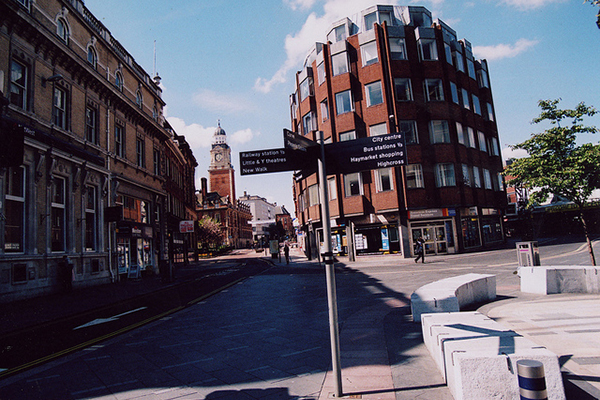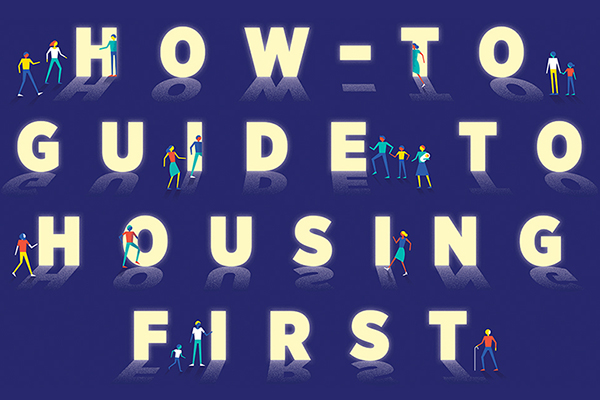You are viewing 1 of your 1 free articles
 Chan Kataria OBE
Chan Kataria OBEChan is the Group Chief Executive of emh group, a housing and care group with a turnover of £125m, 1,100 employees and over 20,000 homes ...more
It is time to eradicate homelessness, not merely manage it
The findings of a project to measure rough sleeping in Leicester show housing associations must take urgent action to combat homelessness, says Chan Kataria
The latest figures from Shelter are startling.
They indicate that more than 300,000 people in Britain are homeless or living in inadequate housing – and what’s more, this is an underestimate.
The sad thing is that increasing homelessness is now a feature across all of our big cities.
The high cost of private renting and benefit cuts have played a key role.
While the sector is doing its hardest to build more affordable homes to meet ever increasing needs this is just one part of a complex jigsaw.
“It is important that we take an active approach to understand the scale and nature of homelessness in our cities.”
The picture around homelessness is far from homogenous.
It’s important that we take an active approach to understand the scale and nature of homelessness in our cities and more importantly to engage with those affected to understand their journey so that we may shape solutions that work for them.
There is no longer a one-size-fits-all approach, as sustainable solutions must be those that provide long-term stability, security, support and hope.
While the Homelessness Reduction Act strives to ensure that we work more collaboratively with partners on prevention, early intervention and support, the lack of funding still limits the extent to which homelessness can be tackled.
The fact is that we need to act urgently and now.
In Leicester, home to one of our largest and most diverse communities, we recently took part in a rough sleep count with more than 100 volunteers from partner organisations taking to the streets at night.
This was part of the European End Street Homelessness campaign, founded by World Habitat (formerly known as Building and Social Housing Foundation).
It comprises a movement of cities working together to end chronic street homelessness by 2020.
Leicester is the latest of 10 European cities to join the campaign, which seeks to identify people who are street homeless so that they can be helped off the streets.
“A key objective for us at EMH is to work with local partners to pilot a ‘Housing First’ approach.”
Led by the Leicester-based homeless charity, Action Homeless, the campaign group brought together a number of partners, including De Montfort University, EMH group, Leicester City Council, Police, Fire and Rescue, Inclusion Healthcare and various other agencies that share the common objective to end homelessness.
This was more than a numbers exercise.
The street count captured the stories of people found and offered immediate support on the night, as well as providing insightful data that builds on existing knowledge and understanding to enable partners to look at long-term solutions and review the existing models of support.
The research also targeted day centres and hostels to survey people who had experienced rough sleeping in the past six months.
A total of 93 people completed the survey (including 48 who replied that they slept ‘outdoors’). The snapshot does not reflect sofa-surfing or people living in overcrowded accommodation.
The findings produced in a report by Professor Jo Richardson of De Montfort University are significant.
“The findings highlight the need for access to the right support at the right time, and it’s not just a housing issue.”
Homeless people in Leicester face multiple and complex health needs with the most severe cases involving physical health, mental health and substance use issues.
Forty per cent of respondents stated that their homelessness had followed a personal traumatic experience.
The findings highlight the need for access to the right support at the right time, and it’s not just a housing issue.
A key objective for us at EMH is to work with local partners to pilot a Housing First approach and to this end we have made a commitment to identify suitable properties for this purpose.
The principle is based on providing a permanent home for rough sleepers as quickly as possible to help them off the streets and ensure there is a package of support based on an assessment of their individual needs.
“Strong community-based partnerships are key.”
This moves away from the traditional model where transitional/temporary arrangements can often fuel insecurity and vulnerability, exacerbating health and well-being concerns.
This is just the start of an on-going process.
The proof will be in the ability to deliver a range of solutions that make a tangible impact. Strong community based partnerships are key to this and EMH has been fortunate to have long-standing roots in the communities we work with.
Initiatives such as the European End Street Homelessness Campaign help to keep the issue at the top of the agenda, bring partner organisations around a common cause and create a sense of urgency for action.
We hope that this campaign will gain momentum in every city.
The role of housing associations is crucial. For years we have tried to ‘manage’ homelessness, it is now time to eradicate it.
Chan Kataria, chief executive, EMH
Cathy at 50 campaign
Our Cathy at 50 campaign calls on councils to explore Housing First as a default option for long-term rough sleepers and commission Housing First schemes, housing associations to identify additional stock for Housing First schemes and government to support five Housing First projects, collect evidence and distribute best practice.












